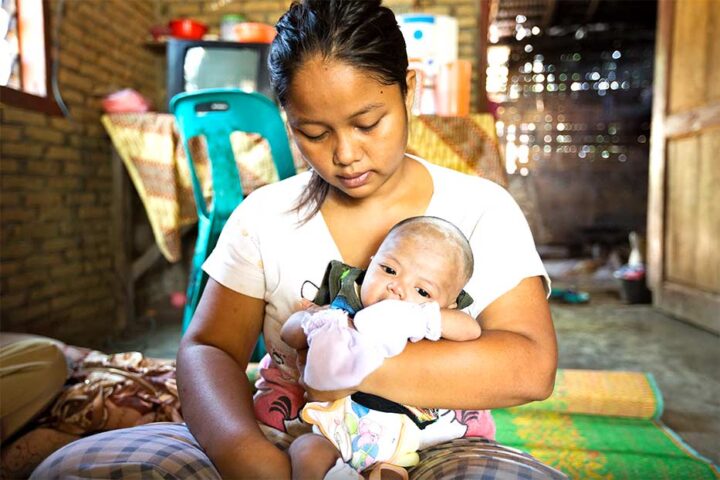Background
Decades of supportive policies and program focused on reducing maternal deaths led to declines in Indonesia’s maternal mortality ratio (MMR) beginning in the early 1990s. The MMR declined from 330 per 100,000 births in 1991 to 228 by 2007. Yet, further reductions in maternal deaths since this time have not materialized. Current estimates indicate stagnant – or by some accounts increases – in mortality rates over the last decade, with the most recent Indonesia Demographic and Health Survey (2012) indicating an MMR of 359 per 100,000 live births. The Challenges of delivering adequate maternal health care in Indonesia include limited access to quality facilities, limited availability of health staff capable of managing complications, lack of awareness and cultural constraints regarding safe motherhood, low nutritional and health status of women, unmet need for contraception and a frail system for recording maternal deaths.
In 2011, USAID launched the expanding Maternal and Neonatal Survival (EMAS) Program to contribute to reductions in maternal and newborn mortality by improving the quality of care within health facilities and strengthening the referral system to ensure efficient and effective referrals from health center to the hospital. EMAS is a 5 year program implemented across the six provinces in Indonesia with the largest burden of maternal and newborn mortality. EMAS works directly with 150 hospitals, 300 puskesmas and with governmental and other stakeholders in 30 districts.
Purpose and Process of Review
EMAS, in collaboration with the Indonesia Obstetric and Gynecological Association (POGI), conducted a retrospective review of selected EMAS-supported hospitals to better understand the factors associated with barriers to improve care – and impacts on maternal death – in EMAS facilities. The scope of the review was focused on gaining information relevant to inform programming, strategies and approaches for the EMAS program. The review sought to assess the contextual factors associated with maternal death based only on a review of medical records. Contextual factors reviewed included the source of referral and pre-hospital care condition, the quality of care provided (to the extent possible) and related barriers that may have contributed to maternal death, such as timeliness of care, availability of personnel or equipment, or appropriate administration of treatment and monitoring, as well as more information regarding hospital data and information regarding the large proportion of maternal death cases where the cause of death was designated as “other”. The completeness of the charts varied by case and not all data was available in all charts. The case were reviewed only in EMAS supported hospitals and the deaths that were review included only those that occurred in the hospital. Hospitals that were receptive to participating in the review and that had higher ratios of in-hospital maternal deaths and live birth were included in the review. In total, 11 RSUDs and one private hospital took part in the review process, representing 57 percent (124/217) of maternal death case reported across the 49 EMAS-supported hospitals during the time period reviewed. Individual charts from 90% (112/124) of the maternal death cases had sufficient information to be included in the review.
Main Findings
- More the one-half (55%) of women died within the first 24 hours after admission.
- Ob/Gyns were present in at least 45% of the cases.
- In 32% of cases, families/women were delayed in seeking care on time. In 40% cases, families/women sought care in a timely fashion.
- Only 9% of women were stabilized before being referred.
- In 38% of the cases, a decision to make a referral was made too late by the medical provider.
- In 53% of the cases, it was determined that clinical decision-making in the hospital was not appropriate.
- In nearly half of the cases, 47%, a delay in clinical decision making was identified as a problem.
- Patient monitoring and appropriate follow up was cited as a problem in almost half of the cases, 47%.
- Bases on the expert opinion of the twenty-four Ob/Gyns who conducted the final review of the cases, almost three-quarters of deaths, 72%, were cited as being preventable.
- The case review process determined that approximately one-third of deaths were attributed to “other non-obstetric” causes.
This report has been presented at Indonesian Congress of Obstetrician and Gynecologist 2015 in Bandung, West Java by President of POGI dr.Nurdadi Saleh, SpOG, and at GKIA’s Workshop in September 2016, supported by USAID through the EMAS Program and AT&T through Jhpiego.
